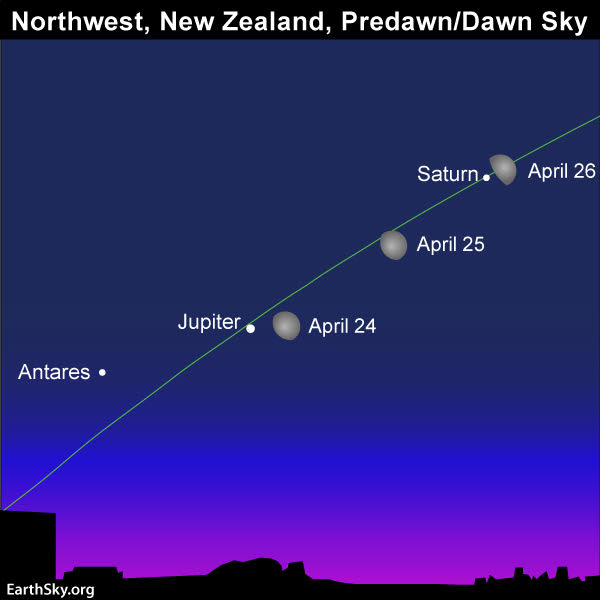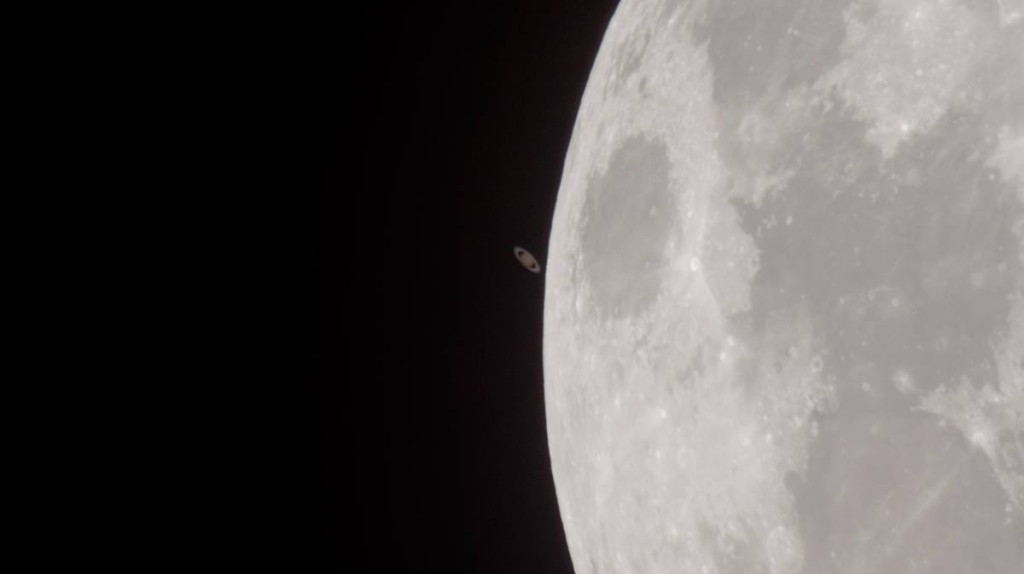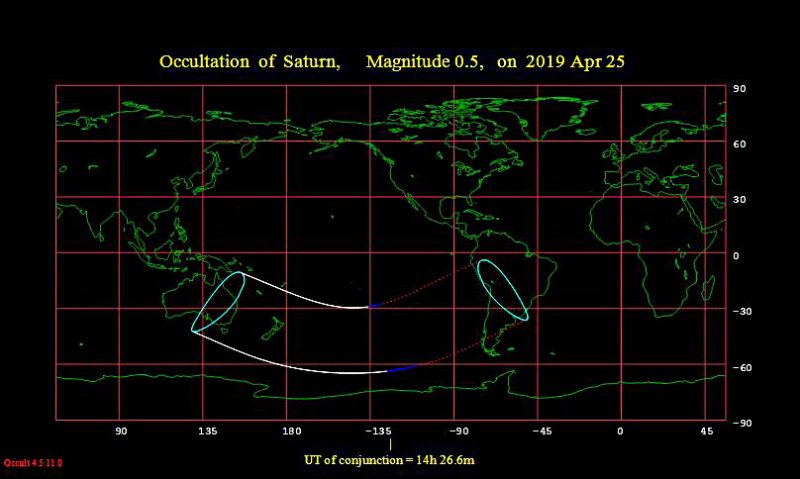On the mornings of April 25 and 26, 2019, watch the moon as it travels away from the king planet Jupiter and toward the ringed planet Saturn. Although Saturn is easily visible to the eye alone, you need a telescope to view its majestic rings.
The sky chart above is for North America, where you’ll see the moon about midway between Jupiter and Saturn in the April 24 predawn sky. From other places worldwide, before dawn on April 24, you’ll still see the moon between Jupiter and Saturn, but – depending on where you live – offset slightly in one direction or the other.
For instance, from the world’s Eastern Hemisphere – Europe, Africa, Asia, Indonesia, Australia and New Zealand – the moon will be offset in the direction of Jupiter. Even so, the moon will still be found between these two planets on April 24. Because New Zealand is the farthest east in the Eastern Hemisphere, the moon will actually be quite close to Jupiter in the predawn/dawn sky on April 24, yet still between Saturn and Jupiter.

From everywhere worldwide, the moon moves eastward in front of the constellations of the zodiac at the rate of about 1/2 degree (its own angular diameter) per hour, or about 13 degrees per day. And since Saturn lodges to the east of Jupiter, everyone will see the moon farther from Jupiter and closer to Saturn on the morning of April 25.
The moon is to pass 0.4 degrees (less than one moon-diameter) south of Saturn on April 25 at 14:27 Universal Time (UTC). From North America, this conjunction of the moon and Saturn will occur during our daylight hours, so we’ll miss it. We’ll see the moon to the west of Saturn in the April 25 morning sky and to the east of Saturn in the April 26 morning sky.
When an almanac says the moon swings 0.4 degrees south of Saturn, this is how far the moon travels south of Saturn as viewed from the center of the Earth. From the Earth’s surface, the distance between the moon and Saturn at conjunction can vary somewhat. The farther north you live on the Earth’s surface, the farther the moon swings south of Saturn; and the farther south you live, the closer the moon sweeps by Saturn.

If you live at a far-southern outpost where this conjunction happens at nighttime, you might be able to watch the moon occult (cover over) Saturn. Saturn will disappear behind the moon’s illuminated side and reappear on its dark side. Eastern Australia and New Zealand win the prize, and we give the occultation times for two localities:
Melbourne, Australia
Occultation begins 10:40 p.m. local time April 25
Occultation ends 11:26 p.m. local time April 25Auckland, New Zealand
Occultation begins 12:32 a.m. local time April 26
Occultation ends 1:41 a.m. local time April 26

Bottom line: Before dawn on April 25 and 26, 2019, watch for the moon to move past the planet Saturn on the sky’s dome. The bright “star” nearby will be Jupiter.
Read more about Jupiter and Saturn at EarthSky’s April guide to the bright planets











